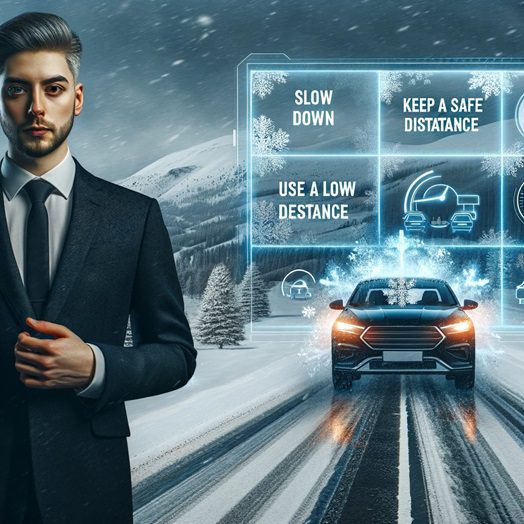 As winter casts its icy spell across the United States, blizzard conditions present formidable challenges for drivers venturing out for holiday travels or fleeing snow country for warmer climates. Preparedness is vital in these frosty scenarios, where sleet, snow, and freezing rain transform roads into treacherous paths.
As winter casts its icy spell across the United States, blizzard conditions present formidable challenges for drivers venturing out for holiday travels or fleeing snow country for warmer climates. Preparedness is vital in these frosty scenarios, where sleet, snow, and freezing rain transform roads into treacherous paths.
Harding Bush, a renowned Global Rescue Security Operations figure and a seasoned Navy SEAL with a background in mountain and cold weather operations, emphasizes caution. “Monitor weather forecasts closely. If heavy snowfall is predicted, it’s prudent to let snow ploughs and road crews do their crucial work before setting out,” he advises.
The Unsung Heroes of Winter: Snow Plow Warriors
Clearing roads in winter goes beyond timely ploughing. It involves a strategic mix of chemicals, abrasives, or their combination applied to road surfaces, along with aggressive snow removal tactics. The method chosen depends on the specific weather and road conditions.
Salt is the primary de-icing material, paired with winter sand, effective at 15 degrees F or higher temperatures. Salt brine, a 23% salt-water solution, is used for pre-treating highways before storms and works best above 20 degrees F. For more challenging conditions, calcium chloride and liquid magnesium chloride are applied to enhance the effectiveness of salt and ensure it remains on the road.
Navigating the Blizzard: Tire Choices and Vehicle Options
When avoidance of snowy roads is not an option, drivers can enhance safety through appropriate tire selection, drivetrain options, speed regulation, and emergency preparedness.
Snow Tires and Beyond: Traction Essentials
Snow tires, also known as winter tires, are designed with larger tread gaps for better grip on snow and ice. Their rubber composition is softer compared to conventional tires, offering improved traction. Tire siping, or cutting slits across a tire’s surface, is another technique to enhance grip in snowy, wet, or icy conditions.
“All-season tires are adequate for mild conditions, but in harsh winter scenarios, snow tires are indispensable, even for vehicles with all-wheel-drive or four-wheel-drive,” states Bridgestone Tire.
With metal studs embedded in the tread, studded snow tires provide unparalleled traction on ice and packed snow. Michelin and Les Schwab Tires endorse them for their exceptional grip. However, their use is subject to state regulations, with varying degrees of restriction across the U.S.
Snow chains are another consideration, particularly in areas like the Rockies, which are sometimes mandatory for safe driving.
Understanding Drive Systems: AWD, 4WD, FWD, RWD
Each drive system offers distinct advantages and limitations in winter conditions. According to US News & World Report, front-wheel-drive (FWD) vehicles provide superior traction compared to rear-wheel drive (RWD) in wet and snowy conditions, but they may struggle more than all-wheel-drive (AWD) vehicles. AWD vehicles distribute power to all wheels, aiding traction, especially if one tire begins to slip.
AWD systems differ in operation, with some providing constant power to all wheels and others functioning part-time. For driving over snow-covered roads and varied off-road conditions, AWD cars and SUVs are ideal, though less effective on slick ice.
Four-wheel-drive (4WD) systems, typically more robust than AWD, send equal power to all four wheels simultaneously, offering significant advantages in extreme conditions.
Travel Prepared: Tips for Blizzard Readiness
“Blizzards are predictable. Pay close attention to weather warnings to avoid being caught in a storm,” advises Bush. However, he notes that snow squalls are more challenging to forecast, capable of reducing visibility to zero rapidly, especially on highways.
Critical tips for travel preparedness include:
- Keeping a full gas tank, as travel times can significantly increase in storm conditions.
- Ensuring antifreeze and windshield wiper fluid are topped up, with extra wiper fluid stored in the vehicle.
- Carrying emergency supplies, including warm clothing, hand and foot warmers, a sleeping bag, a small shovel, and a ready-made snow safety kit.
The Final Word: Slow Down
Bush concludes, “No matter your preparation level or driving experience, winter conditions demand a slower pace. Reaction times, braking distances, and maneuverability are all impacted. Keep a safe distance from other vehicles and approach your drive with patience and caution.”
In conclusion, navigating winter roads in blizzard conditions requires proper vehicle preparation, informed tire choices, and a mindful approach to driving. By adhering to these expert tips, drivers can ensure safer journeys through the challenging landscapes of winter.
Written by: Yves Thomas




















